This article is a quick rundown of creating custom workflow actions to send users notifications when a new security event has occurred in your system using XRM’s custom Security Audit solution. For more information on Security Audit, please visit the dedicated product page or visit the AppSource page to get started installing our solution.
Creating notifications on security events is a relatively simple process and is only as complex as you need it to be. For this demo, we will be using Flow to create a simple workflow for notifying a user based on a new security event.
To demo this, we will create a simple email notification to new security event. Go to the Microsoft Flow website and click create. Alternatively, you can add flows within PowerApps by heading to Flows and clicking, “New Flow.” For this example, go to automated flow, which allows us to trigger a flow based on a designated event.
Give your flow a name, such as, “Send Notification on Security Action,” and under, “Choose your flow’s trigger,” search When a row is created and click, “When a row is created, updated or deleted,” which will allow us to set a trigger for entity records in our current Dataverse environment.
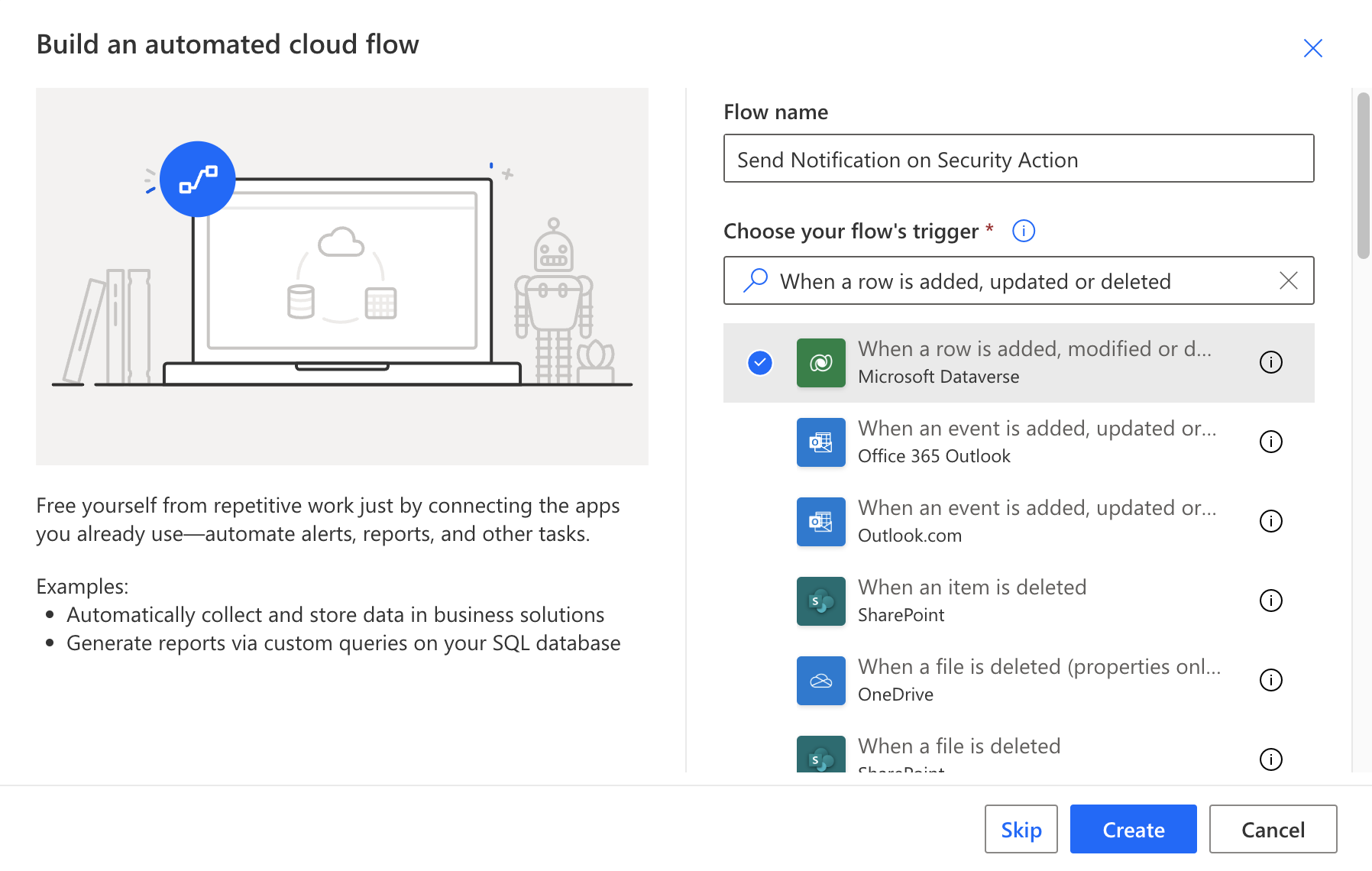
Set the trigger condition of the flow to Added change type, set the table name to Security Event Logs and set the scope to an organisational level.
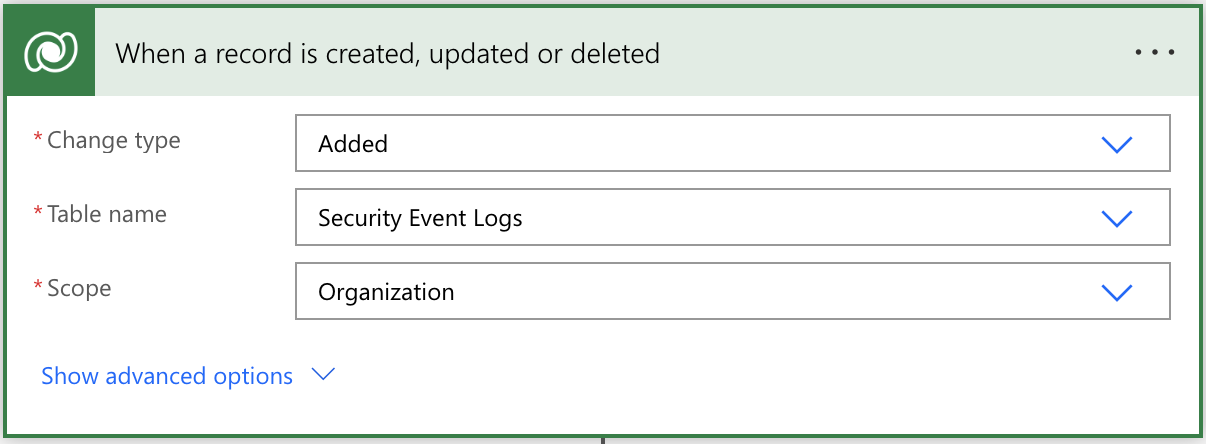
Click the new step button and in the new step search box, type send email and chose the step, Send an email (V2) under the Office 365 Outlook triggers. Add the desired recipient of the email into the To field. In the Subject field, we’ll add a generic subject with a timestamp of the event occurring. Enter the start of the subject, New Security Event.
While typing in the subject box, you’ll notice a popup box containing fields from the Security Event Logs table. Under dynamic content search, Created on and add click the item to add it to the subject field. The body of the email will be created in the same manner, as can be seen in the screenshot below.
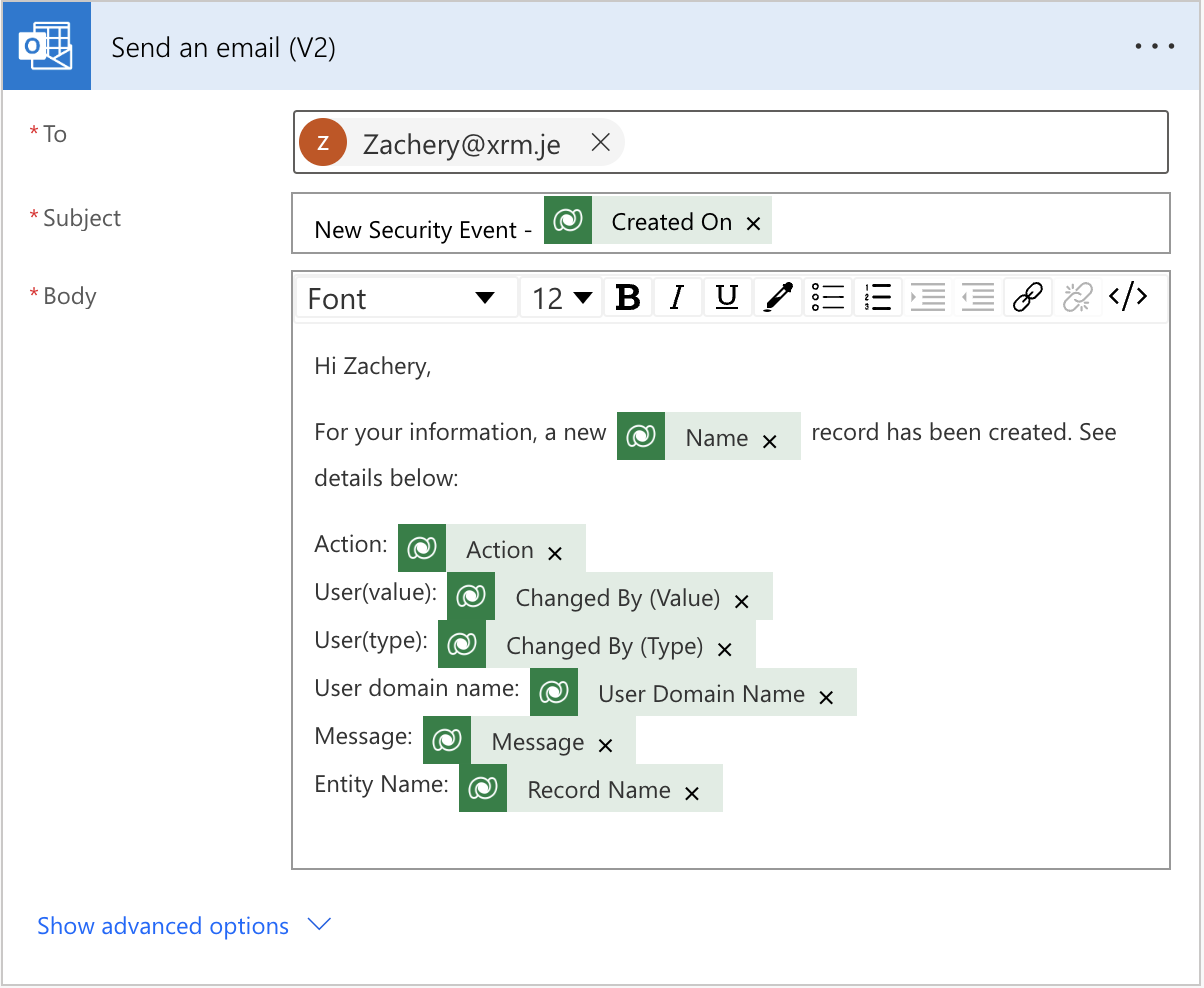
Save your progress so far. Good practice dictates that we should do a quick test run of this Flow, which can be done by clicking test in the navigation bar. As this is a newly created flow, it is required to initially test it manually as we do not yet have any test data to run off of. Set your test to manual and click the test button.
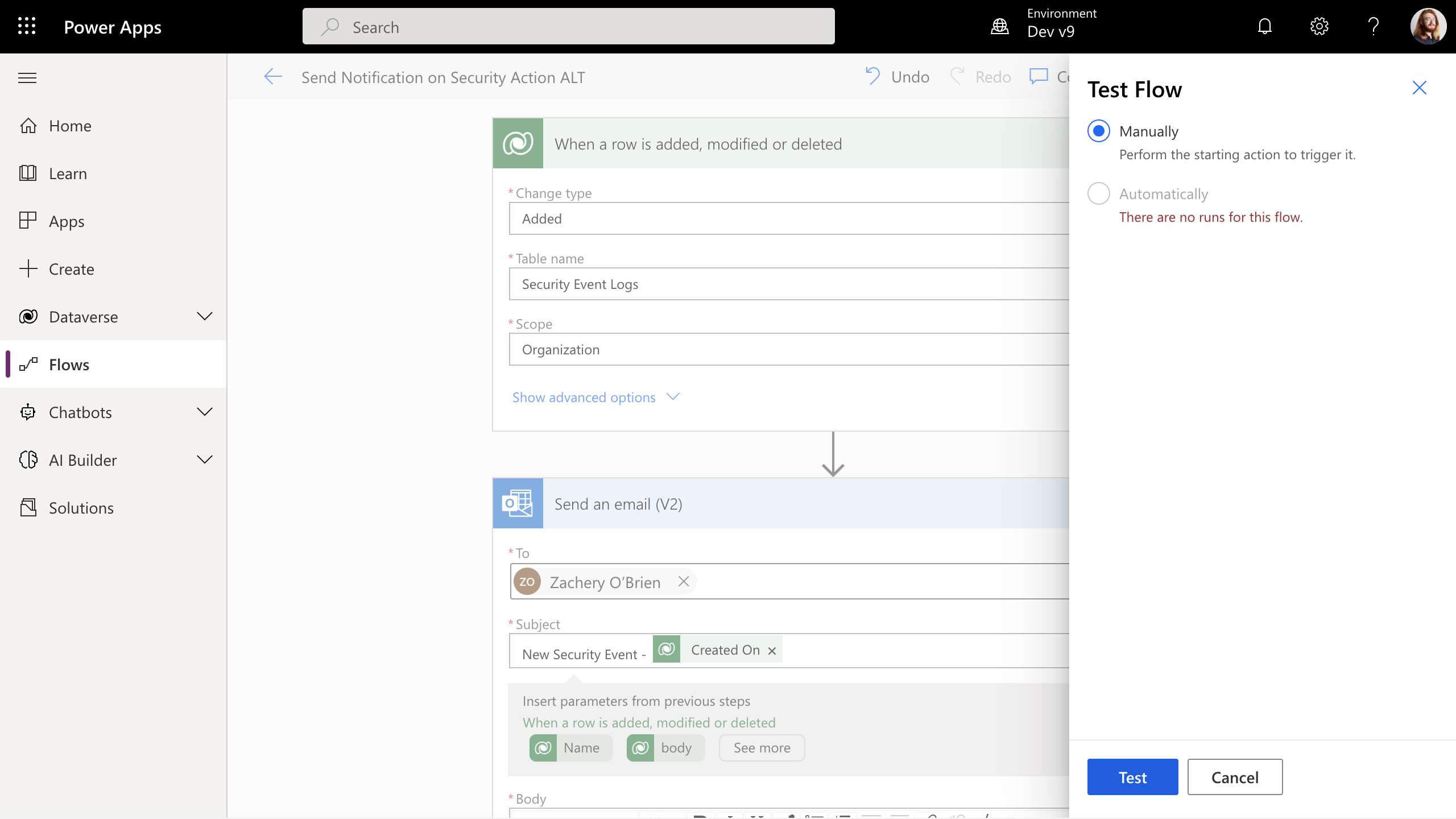
This will set your flow into a testing mode where it listens for your triggering actions to run. As such, go to your Dynamics/PowerApps environment and update a security role to trigger a Security Event Log row to be created. Checking back into your flow, you should have a test successful message as well as receive the email we mocked up in our example.
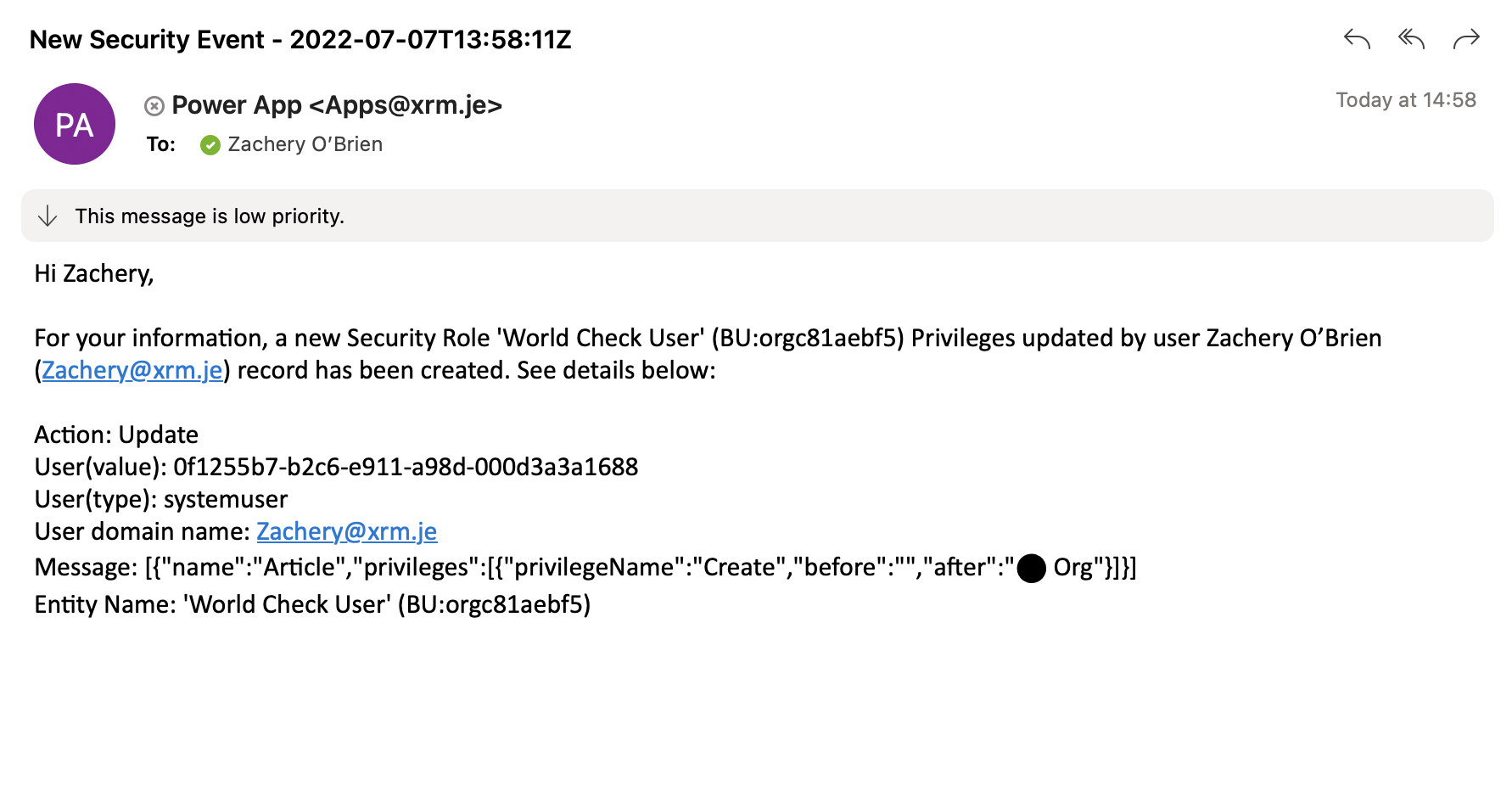
And we’re done! Setting up notifications for Security Audit is a simple process. If you would like to find out more, please visit the product page or to get access to our free version, head to the AppSource page.

Written By: Zachery Walsh O'Brien
Zachery is a Web Developer with a great eye for front end web development. He has studied Graphic Design, received a Higher National Diploma in Visual Communications, and interned as a Graphic Designer upon leaving college in a digital design agency in Ireland. Zachery originally focused on WordPress web design but has now diversified his skillset towards a web development role being able to leverage many front end languages and frameworks.


